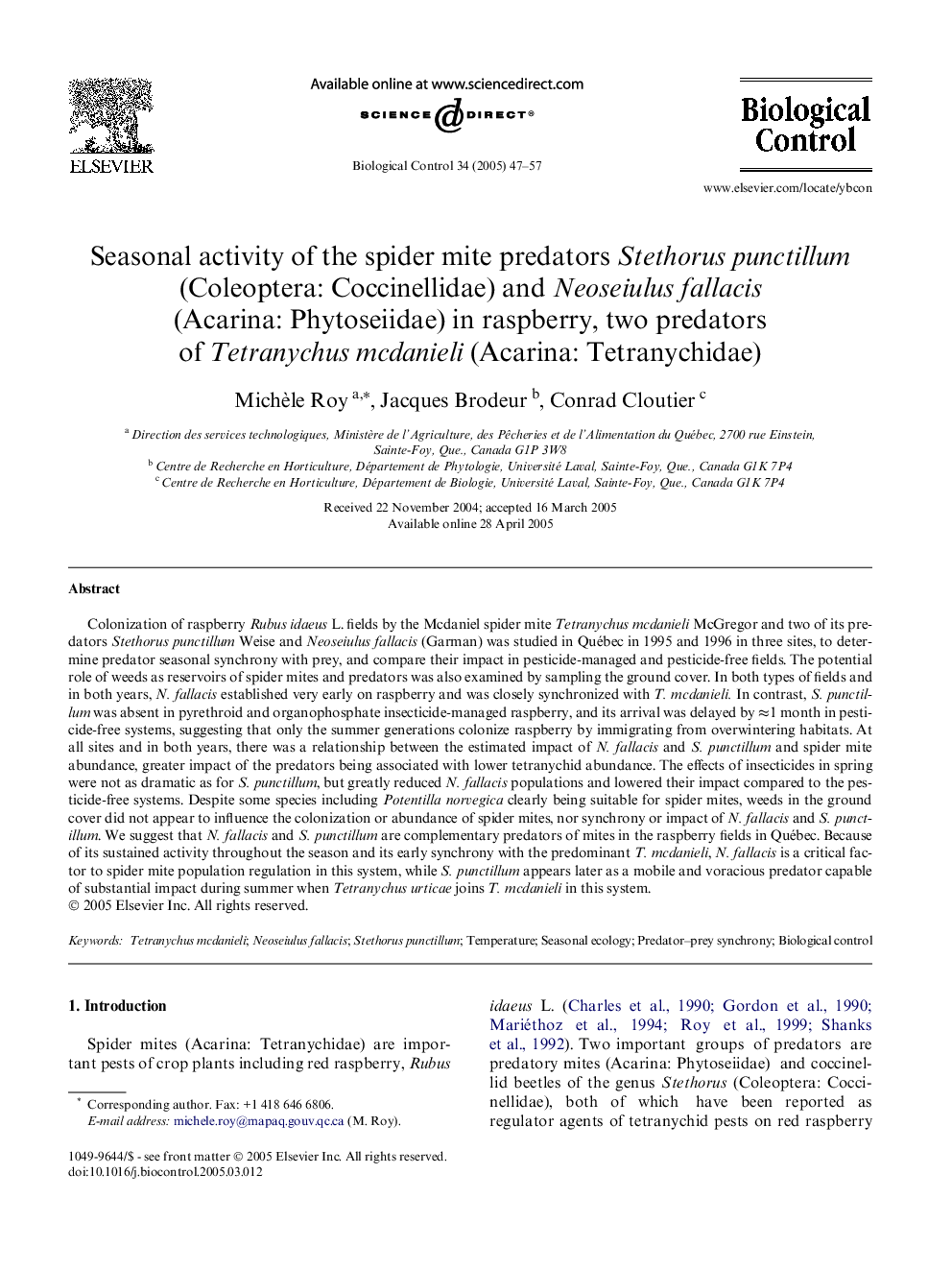| Article ID | Journal | Published Year | Pages | File Type |
|---|---|---|---|---|
| 9471928 | Biological Control | 2005 | 11 Pages |
Abstract
Colonization of raspberry Rubus idaeus L. fields by the Mcdaniel spider mite Tetranychus mcdanieli McGregor and two of its predators Stethorus punctillum Weise and Neoseiulus fallacis (Garman) was studied in Québec in 1995 and 1996 in three sites, to determine predator seasonal synchrony with prey, and compare their impact in pesticide-managed and pesticide-free fields. The potential role of weeds as reservoirs of spider mites and predators was also examined by sampling the ground cover. In both types of fields and in both years, N. fallacis established very early on raspberry and was closely synchronized with T. mcdanieli. In contrast, S. punctillum was absent in pyrethroid and organophosphate insecticide-managed raspberry, and its arrival was delayed by â1 month in pesticide-free systems, suggesting that only the summer generations colonize raspberry by immigrating from overwintering habitats. At all sites and in both years, there was a relationship between the estimated impact of N. fallacis and S. punctillum and spider mite abundance, greater impact of the predators being associated with lower tetranychid abundance. The effects of insecticides in spring were not as dramatic as for S. punctillum, but greatly reduced N. fallacis populations and lowered their impact compared to the pesticide-free systems. Despite some species including Potentilla norvegica clearly being suitable for spider mites, weeds in the ground cover did not appear to influence the colonization or abundance of spider mites, nor synchrony or impact of N. fallacis and S. punctillum. We suggest that N. fallacis and S. punctillum are complementary predators of mites in the raspberry fields in Québec. Because of its sustained activity throughout the season and its early synchrony with the predominant T. mcdanieli, N. fallacis is a critical factor to spider mite population regulation in this system, while S. punctillum appears later as a mobile and voracious predator capable of substantial impact during summer when Tetranychus urticae joins T. mcdanieli in this system.
Keywords
Related Topics
Life Sciences
Agricultural and Biological Sciences
Agronomy and Crop Science
Authors
Michèle Roy, Jacques Brodeur, Conrad Cloutier,
